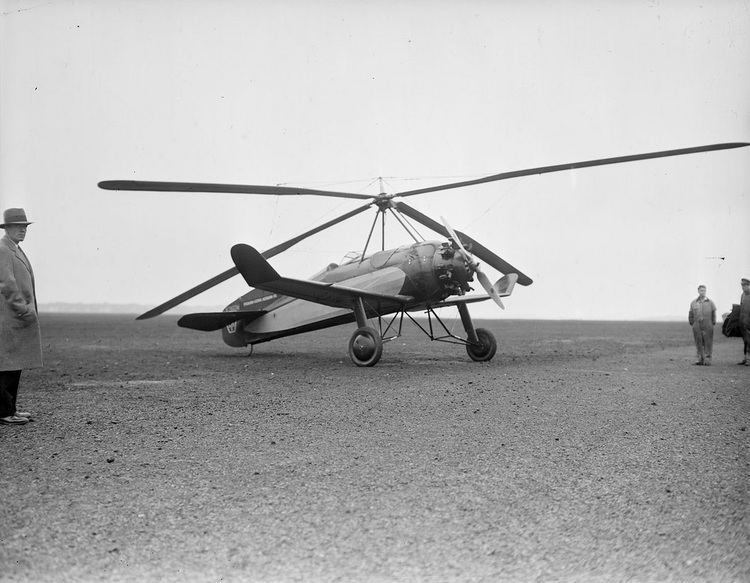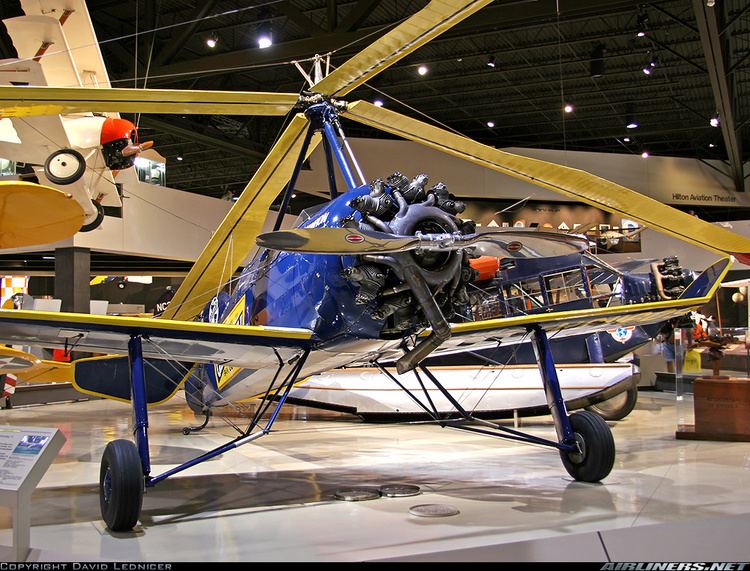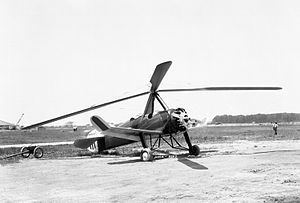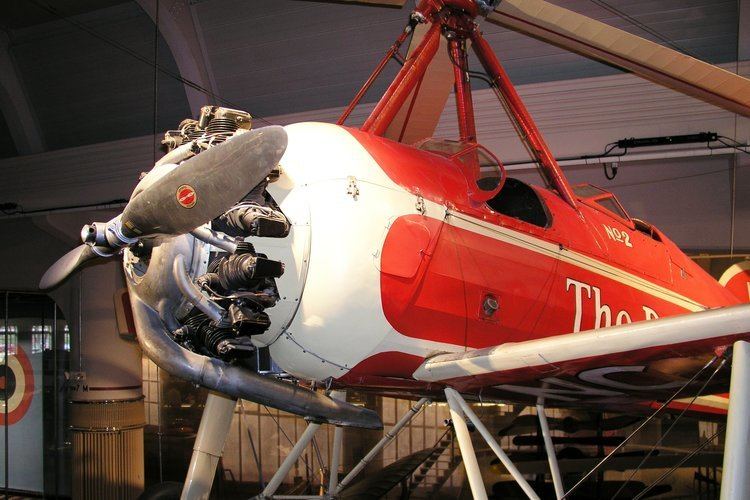Top speed 190 km/h Length 7.04 m Manufacturer Pitcairn Aircraft Company | Wingspan 9.14 m First flight 1931 Designer Harold Frederick Pitcairn | |
 | ||
Miss champion pitcairn pca 2 autogiro at oshkosh 2005
The Pitcairn PCA-2 was an autogyro developed in the United States in the early 1930s, Harold F. Pitcairn's first autogyro design to sell in quantity. It had a conventional design for its day – an airplane-like fuselage with two open cockpits in tandem, and an engine mounted tractor-fashion in the nose. The lift by the four-blade main rotor was augmented by stubby, low-set monoplane wings that also carried the control surfaces. The wingtips featured considerable dihedral to act as winglets for added stability.
Contents
- Miss champion pitcairn pca 2 autogiro at oshkosh 2005
- Operational history
- Variants
- Specifications PCA 2
- References

Operational history

The PCA-2 was the first rotary-wing aircraft to achieve type certification in the United States and was used in a number of high-profile activities including a landing on the White House lawn and the first flight across the United States in a rotorcraft. This latter feat was attempted by Amelia Earhart, flying for the Beech-Nut food company, but was actually accomplished by John M. Miller who completed his flight nine days before Earhart on 28 May 1931, in his PCA-2 named Missing Link. Learning of Miller's achievement upon her arrival in California, Earhart set out to turn her flight into a round-trip record by flying east again, but abandoned the attempt after three crashes. Earhart set an altitude record in a PCA-2 on 8 April 1931 with a height of 18,415 ft (5,615 m). This record was broken in another PCA-2 by Lewis Yancey who flew to 21,500 ft (6,600 m) on 25 September 1932.

In 1931, The Detroit News made history when it bought a PCA-2 for use as a news aircraft due to its ability to fly well at low altitude, land and take off from restricted spaces, and semi-hover for better camera shots. In May 1933, Scripps donated the autogyro to the Henry Ford Museum in Dearborn, Michigan.

The Champion spark plug company operated a PCA-2 as a promotional machine in 1931 and 32 as Miss Champion. It was flown over 6,500 miles in the 1931 Ford National Reliability Air Tour. This machine was restored to flying condition in 1982 by Steve Pitcairn, Harold's son. In 2005, he donated it to the EAA AirVenture Museum. Other PCA-2s are preserved at The Henry Ford and the Canada Aviation Museum.
Variants
Specifications (PCA-2)
Data from "Pitcairn PCA-2 Autogiro Specifications"
General characteristics
Performance
